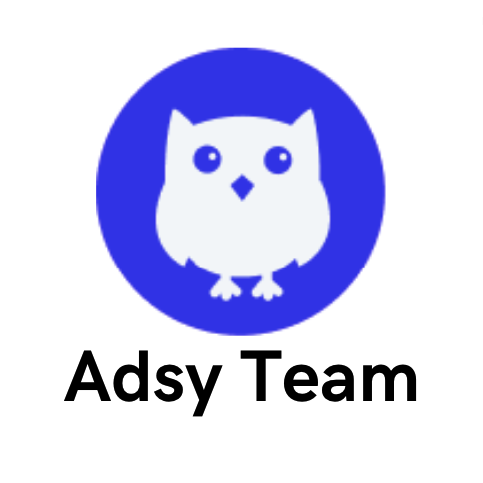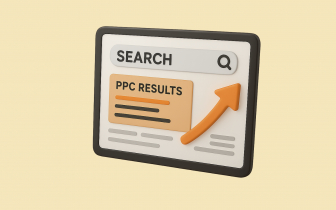How to Build a Customer Acquisition Strategy That Works for Your Business

Every company needs more customers. But getting your target clients is often easier said than done. Even when your products or services are the best, you still have to work on people noticing you and choosing your offering over your competition.
That’s why every brand has to understand what user acquisition strategies are all about. But it can be confusing, so we’ve prepared this guide for you.
Today, you’ll understand how this concept works. But, more importantly, you’ll see how you can design a strategy that works for your own business. By the end, you should be able to get more customers and even save while at it.
Client acquisition explained
The client acquisition process is any activity or process you use to attract new customers.
It covers everything from finding the right prospects and getting them to engage with you to the moment they buy your products or services. In some cases, it even includes post-sale stages.
So, basically, it could be extended to anything you do to get clients and make them stay with you.
Even if you think that your business doesn’t really have any strategy like this, it isn’t like that. Every company wants to make money, so they have some sort of system in place to get clients.
The issue, though, is that some just “go with the flow” while others take the time to create a well-defined procedure that works for them. Both approaches could work. But today, we’ll focus on how you can create and adjust your strategy to get the best results.
Is it worth it? Let’s see.
Why is it important for business growth?
A well-structured client acquisition strategy comes with many benefits.
Imagine a business that doesn’t make any sales? Or, say, someone buys from them, but those people never return. It doesn’t take much to see that it’ll be hard for that company to succeed.
That’s why customer acquisition is such a big deal, especially when paired with good retention tactics. It ensures that your business:
- Keeps attracting a steady flow of new sales that keeps the company alive.
- Doesn’t lose relevance — instead, you increase your brand awareness. This can compound when you also leverage guest posting as a core part of your marketing strategy.
- Can cover costs and even reinvest more into the business, making it easy to expand your offerings.
- Can thrive even in a competitive niche.
- Is good enough to attract investors (if needed).
- Keeps the natural churn rate low, avoiding any negative effects on your company's health.
No matter how you choose to look at it, acquiring new customers and convincing them to turn into loyal clients is insanely important for any successful business model.
5 examples and what you can learn from them
The good news is that there are all kinds of customer acquisition strategy examples out there. That means you’re bound to find something that works for you. Let’s consider some of the best brand examples and what they can teach us:
1. Casper (The power of referrals)
Referrals have always been a great way to turn buyers into loyal customers who are happy to “market” for you. Casper’s referral program offered clients the option to give a friend $75 off and get $75 right back. This worked!
Not only were people happy to give (they got it back anyway), but they were also excited to recommend the brand to their circles. The word-of-mouth strategy is still powerful, as people tend to trust other people more than any ad.
Besides, Casper offers a 100-night trial. This means that even risk-averse people are more willing to try their offers because they don’t lose anything.
Today, the company still uses this model even though the offer has changed from $75 to 30% off.
Source: Casper.com
Lesson learned
Referrals are those simple, scalable customer acquisition campaigns that can drive tons of sales. You just have to make it rewarding for clients to talk about your brand with others. Even better if you can reduce the risks for those who are afraid to try new things.
2. Lululemon (Community works)
You hear Lululemon, and your mind immediately pictures a community of fitness enthusiasts. You may know them for their ads and those fit, happy influencers. But Lululemon has also managed to create community-based marketing that fuels organic growth.
Their tactic? They offer free in-store yoga classes, wellness events, and fitness workshops. By doing so, they’ve successfully created local hubs where people can connect with the brand. At the same time, they’re also connecting with each other over their shared interests.
Source: Lululemon
Lesson learned
The best customer acquisition techniques recognize that people are drawn to other people — not fancy logos and slogans. So, consider creating a system that helps your client bond over their shared love of your products/services.
3. ASOS (Know your audience)
ASOS is popular with the younger crowds, especially the college group. It totally makes sense, as the younger crowds are more likely to be into fashion but also care about stuff being budget-friendly.
ASOS offers a 10% student discount that's always on. This makes it more affordable and encourages buyers to keep coming back.
The first-timers also get an attractive discount that draws them in and makes shopping feel more enjoyable. After all, you get the feeling you are actually saving lots of money.
Source: ASOS
Lesson learned
Brands that build loyalty are those that align their sales strategies to the needs of their target audience. So, think about what your audience prioritizes, and give them that. It can be anything from same-day delivery and good deals to luxury packaging and a personal concierge.
4. Sephora (Personalization breeds loyalty)
If you are interested in how a personalized acquisition marketing strategy works, you can take a look at Sephora. At first glance, they don’t do anything exquisite — they’re a beauty retailer with many competitors. Yet, their people come back to them every time.
How do they achieve this?
Sephora’s clients get personalized product recommendations based on purchase history, location, and so on. On top of that, their loyalty program rewards customers for purchases, reviews, and referrals.
As a result, people often get better deals and feel valued, which leads to more returning and new customers (as people talk, you know).
Source: Sephora
Lesson learned
Create a personalized shopping experience that highlights how much you care. Even just offering your people a tailored product or recommendations can say a lot. Besides, it makes the whole shopping experience more enjoyable.
5. HubSpot (Valuable education is a powerful tool for interest)
If there's one thing HubSpot is famous for, it's the ton of resources they offer. Their B2B customer acquisition strategy is simple — offer valuable information that serves as a lead magnet.
Basically, they produce tons of helpful educational content with actionable solutions to people’s pains. This helps them sell afterward because the audience already trusts their expertise.
Source: Hubspot
Lesson learned
Giving your prospects something valuable for free is the best a business can do. This way, you can both show your expertise and get people to come back to you as a source they trust. Even if they don’t buy from you right away, this is how you build a brand that users remember.
Best practices for your customer acquisition marketing strategy
By now, you understand how some other companies attract new clients. But where should you start? It’ll differ from business to business, but you can begin with these seven best practices:
1. Your strategy is only as effective as the research you do
Customer research is a thing you can’t skip. It’s essential for your marketing, sales, customer support, product department, and pretty much any other team, as your offering revolves around your client (or at least it should).
So, understanding who the people you deal with are is the first thing you should do to get new prospects. You’ll see that not everyone will need your products/services, which will save you lots of time and money.
Besides, good customer research helps you understand how to connect with your people — through content, messaging, events, etc.
So, if you want to get new clients and retain the ones you already have, you have to understand them. But how do you get that information? These are some of the easiest tactics:
- Ask your clients directly when you can. It can be in person, online, by phone, or email — whatever works for your audience.
- Use software for this purpose. Some of these tools even come with recording features. This way, you can watch video playbacks of how your customers interact on your site.
- Get heatmaps to track where your users like to click, where they spend the most time on your site, etc.
- Analyze your web metrics. Notice that the bounce rate on a particular page is too high? It could also be a sign that something is wrong with that page. Maybe the content is outdated, or the topic just isn't resonating with your audience.
2. SEO is still the key
Wondering how to acquire new customers while not spending all your money on “empty” ad clicks? There are many options, but the answer will always involve some kind of SEO techniques.
Search engine optimization is one of the best ways to put your business out there, to make you seen. Often, people don’t buy from you simply because they don’t know about your existence. That’s why getting organic visibility is extremely important.
Even better if your SEO skills are good enough to get you somewhere on the first page of search results. Those are the spots that get the most organic traffic and clicks.
Want to get in on this? Then, these are the things you could be doing:
- Keyword research to find the words your target customers are typing online to find services or products like yours.
- Understand the intent behind each search query. Check whether it is informational, transactional, commercial, or navigational in purpose.
- Use the keywords to create quality information-packed content. The kind that aligns with your target audience.
- Make sure you use different formats to align with different stages of the user’s journey. For example, how-to guides work well for the informational stage. Product comparison blogs — for the consideration stage. Testimonials and case studies — for the decision stage.
- Experiment with different content lengths to see which one people engage with the most. Too long, and it will probably discourage people from reading. Too short, and it might not pass on enough information. So, experiment until you find what works for your people.
Naturally, for every piece of content, you will need quality images or even videos and all the basic SEO tactics (keywords, alt texts, meta title/description, etc.).
While you have to optimize your copy, it still has to be very human. You need your specific tone of voice, some relatable details, and maybe even some jokes. Your communication has to be clear and memorable. And how you do that is up to you.
Besides, when it comes to landing pages, use conversion copy to get actual buyers. Otherwise, even ranking well and getting tons of traffic won’t bring you more clients.
3. Diversify your platforms
Of course, if you want to reach as many people as possible, you have to expand your online presence. Different parts of your target audience might use different platforms, so it’s great when you are everywhere they can potentially spend their time.
Plus, your clients’ preferences could also shift, and that means you also have to adjust. So, maybe right now, your main content distribution channel could be a website. But that might expand to include social media, podcasts, and PPC.
The more you diversify your strategies, the easier it is to make sure that you don't miss out on other clients who prefer other platforms.
It’s also great to monitor whether anything new comes up in the social media market in general. You know, once TikTok was an app where teenagers danced, and that was it. But now, it’s a channel that generates leads for hundreds of thousands of businesses.
4. Take email marketing seriously
Even though email marketing is an old(ish) marketing tactic, it’s still a super popular (and effective) customer acquisition strategy for B2B and B2C businesses.
Many claim that Gen Z and other younger generations don’t read emails too much, but around 4.5 billion people still use email, which seems like more than enough for an average business:)
Here, you can also work on personalization (remember our example above?). For this, use software that shows you how people interact with your site. You can then prepare different email sequences that work for different stages of the buyer’s journey.
It’s also great to plan some post-purchase follow-ups to give some extra information or even upsell. But don’t turn all your emails into a sales pitch. This will turn people off (definitely).
Instead, treat your mailing list as actual humans, not just random email addresses. Would you want to get tons of spammy messages that scream “buy me now”? Analyzing your campaigns through this prism is one of the best things you can do for any marketing or sales strategy.
5. Consider starting a referral program
Thinking of how to increase customer acquisition rates without waiting too much? A referral program is something that can work really well in this case. It can bring you fast results if you already have a client base. So, it might not be that effective for new businesses.
But the great part is that it’s easy to set up, you can even do it for free, manually, without any tools. If you’re a big company, that’s not an option, but for small businesses, it’s easy to test the waters first.
As for the best practices here, try to create a double-sided reward where both the referrer and the person invited get a reward. And of course, your incentives have to make financial sense for your company, so don’t go overboard.
But it’s a game of balance because you have to make the reward attractive for your clients as well if you want people to take up the offer. You could offer commissions, credits, discounts, or even branded merch (not that attractive in most cases).
You can try different things to see which one is a hit with your customers.
6. Widen Your Circle
You may have heard people say, "No man is an island." But that saying also applies to businesses. No company exists in isolation.
Stepping out of your bubble can be a good way to get new prospects all the time. That's why networking, guest posting, and brand sponsorships are a thing.
All types of businesses recognize the value of working with others. Even big brands, like Pepsi and Coca-Cola, which are direct competitors to each other (even rivals), have been known to partner up that one time when the stars aligned.
Granted, it was for charity, but that still works. Customers like to know that their brands care about social causes and not just about their own profits.
Source: ACP
Another example of rivalry that’s also a big partnership is Samsung and Apple. Despite everyone thinking that they’re purely competitors, there is more to this story.
Source: Android Authority
You might be wondering what this has got to do with you? Here's the deal — partnering with other relevant brands can help you get new customer acquisition ideas.
It is a great way to expand your reach. Basically, this is how more people can learn about your existence.
Of course, the best scenario is when you partner with an indirect competitor who offers a complementary service/product. Say, you produce yoga wear, and your partner sells yoga mats. There is no need to explain why this can work well.
7. Use an attractive pricing model
Your pricing policy can be one of your most powerful things that either attracts clients or makes them go for someone else. People are often looking for a way to get more value at a lower price.
That's one of the major reasons why most buyers will compare the offerings from one brand to another to see which one is the best fit for their budget.
Of course, this depends on your target audience. If your people are price-conscious, consider this. But if that’s not the case, you have to stand out with your quality or some extras.
Still, say you're in a competitive niche and other businesses’ price offerings are a bit high. Well, this could be a way for you to pull some of their customers towards you. Just offer lower prices for the same value or even slightly more.
And if you can’t lower your price, you can consider the occasional discount, seasonal freebies, or even freemium models.
This can be a slippery slope because it’s much better to compete in the quality of service and products rather than beating someone’s prices. Still, in some cases, it could work as one of the tactics.
Conclusion
There are many customer acquisition methods that you can try. But the best ones are always the ones that put your client first.
Ideally, your whole product/service creation should be focused on what your audience needs. If that’s the case, the only thing you have to do after is make your brand visible. And if your offering is really great, it doesn’t matter that much what channel you’re using.



